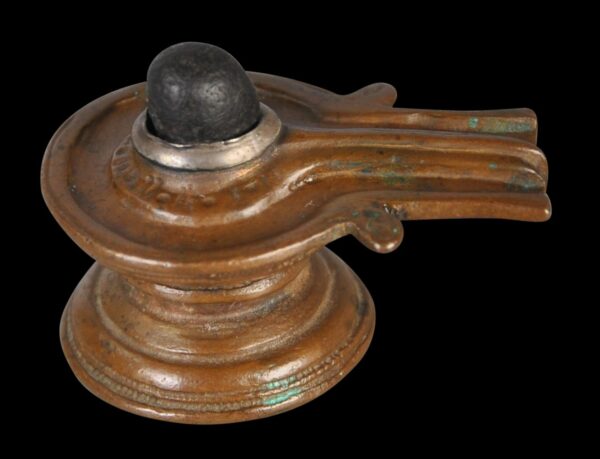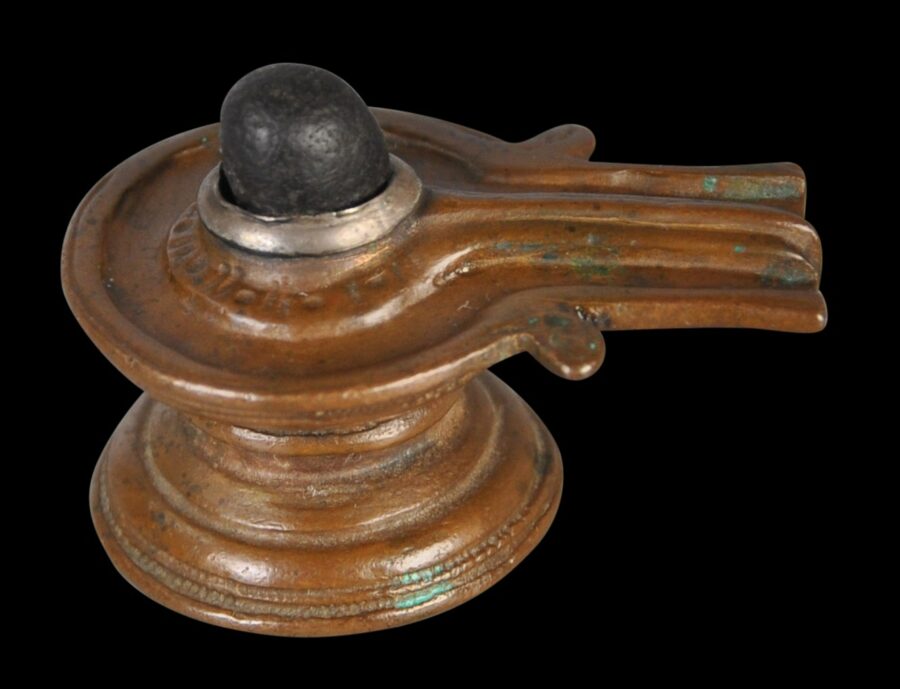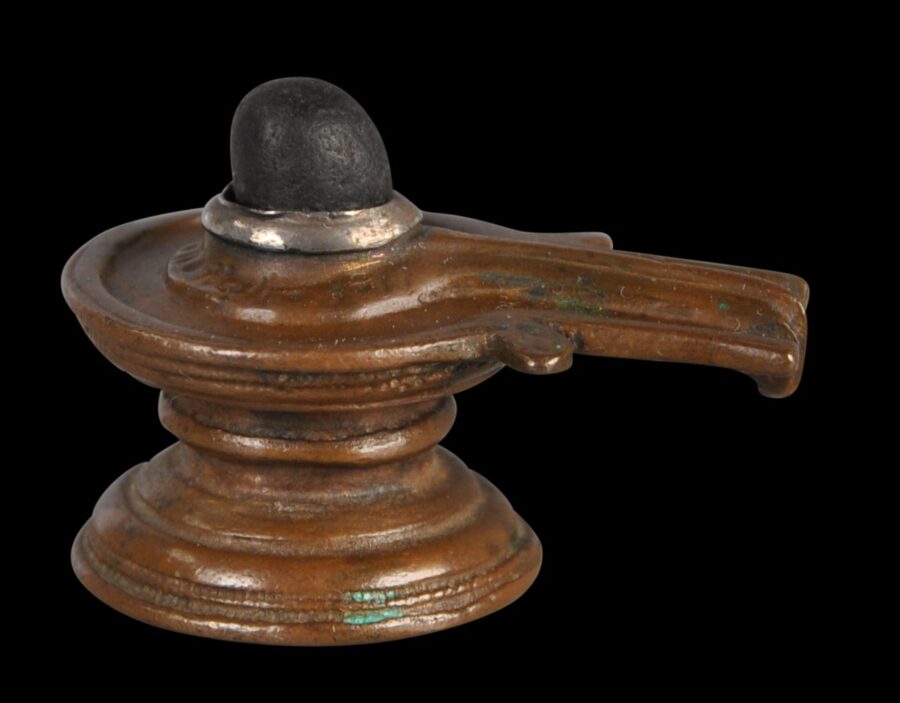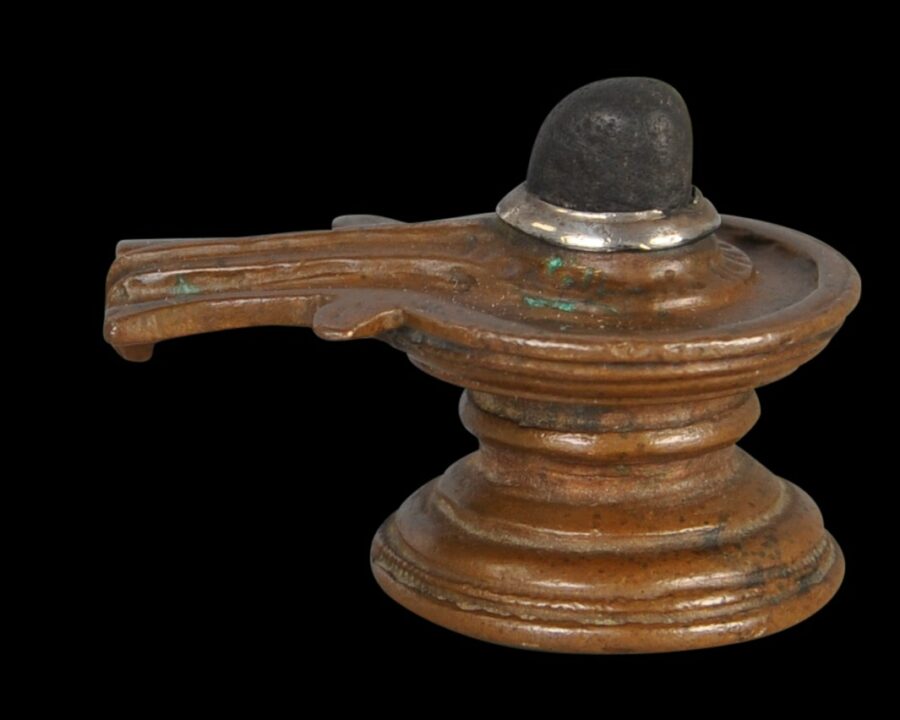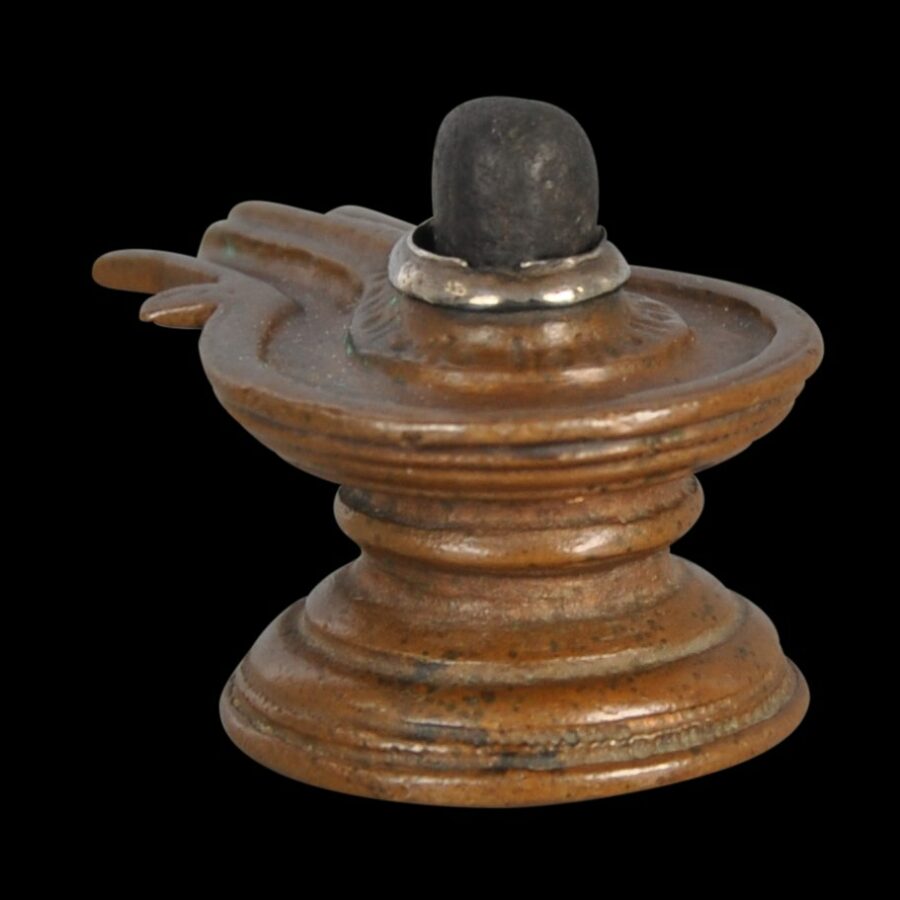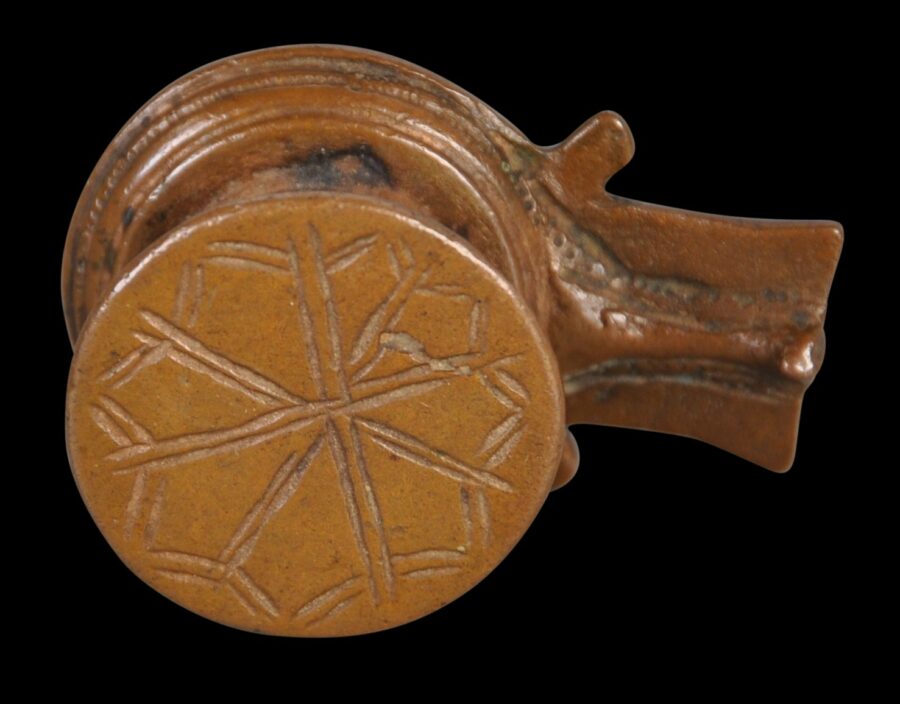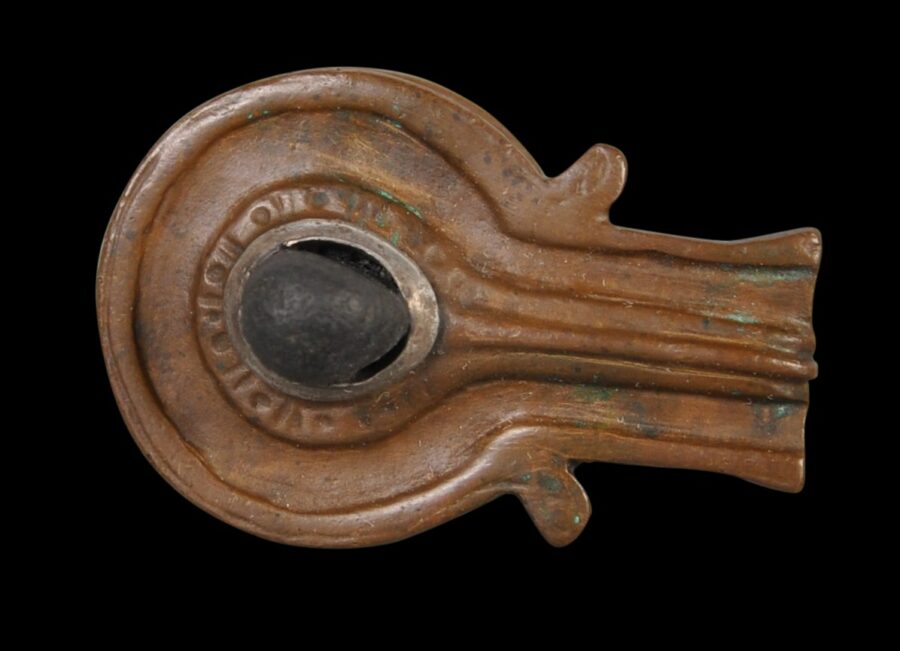This miniature, cast bronze Shivalingam is highly unusual in that the female part, the yoni, is mounted by a jangama lingam of the Lingayat sect. Usually, jangama lingams are movable and stored in a silver amulet container hung from the neck of sect followers. The lingams comprise a small piece of stone carved by specialist carvers that is then covered in a dark, protective compound called kauthi. This comprises a mix of lac, clay, sacred cow dung ashes, and marking-nut tree fruit juice or black antimony powder (also used as an eyeliner cosmetic.)
The lingam has been secured into the yoni base with a band of pure silver. Silver is fitting for such a role – it was seen as ‘pure’ and so appropriate for a ritual role.
This Shivalingam is beautifully cast with a waisted, tiered yoni platform. The bottom of the base is engraved with an eight-petalled flower. The piece has a delightful, chocolate patina with softened contours from years of puja-related handling.
The Lingayat sect became prominent in the twelfth century as a reaction to Brahmanism. Many Lingayats today live in Karnataka, Maharashtra and Tamil Nadu. The sect rejects the supremacy of the Brahmans; denies polytheism and acknowledges Shiva as the one true god thus rejecting Brahma and Vishnu. It rejects caste distinctions, rebirth, pilgrimages, temple worship and sacrifice; does not burn its dead but buries them; does not allow child marriage, and does allow widows to remarry.
The Lingayats believe movable lingams to be the only true symbol of Shiva. Individuals are initiated into the sect as they enter adulthood. A consecrated lingam uniquely created for each initiate is presented by a community guru amid prayers and ritual. The lingam is created only for the individual and must be protected and guarded, hence the need for a protective box as shown here. All Lingayats carry their personal lingam with them at all times. After death they are buried in a sitting position with the lingam in the left hand.
References
Utracht, O., Traditional Jewelry of India, Thames & Hudson, 1997.


